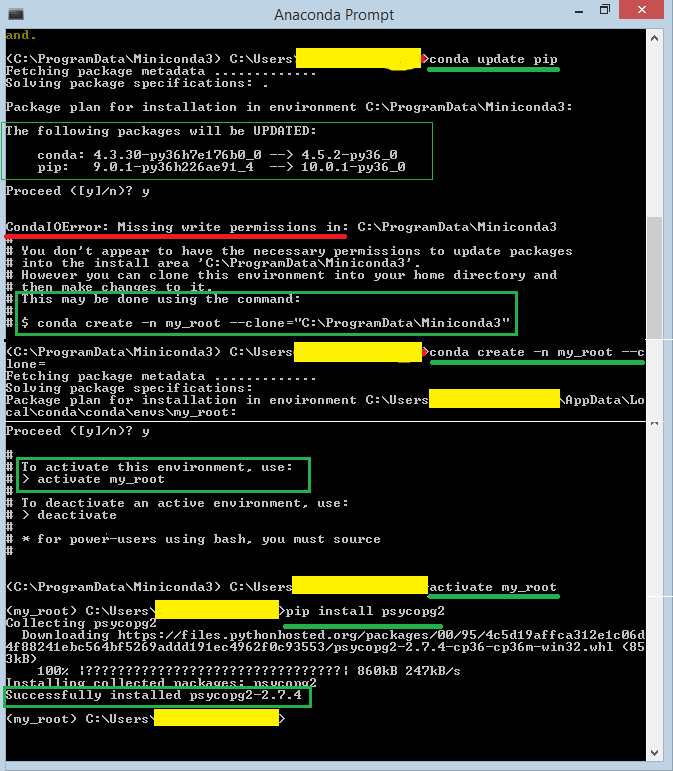
Moving to c:\users\araki\appdata\roaming\python\python39\scripts\pip3.10.exeįrom C:\Users\araki\AppData\Local\Temp\pip-uninstall-fq9ov9kf\pip3.10.exe

Moving to c:\users\araki\appdata\roaming\python\python39\scripts\pip.exeįrom C:\Users\araki\AppData\Local\Temp\pip-uninstall-fq9ov9kf\pip.exe WARNING: No metadata found in c:\users\araki\appdata\roaming\python\python39\site-packages Requirement already satisfied: pip in c:\users\araki\appdata\roaming\python\python39\site-packages (22.1.2)ĭownloading pip-22.3.1-p圓-none-any.whl (2.1 MB) Pip 22.1.2 from C:\Users\araki\AppData\Roaming\Python\Python39\site-packages\pip (python 3.9)Ĭ:\WINDOWS\system32>python.exe -m pip install -upgrade pip I re-booted and now I get this error after trying to install pip: C:\WINDOWS\system32>python -V

🎉 And there you have it! You now know how to update or upgrade a package using Python’s pip.Yes. This will update all outdated packages, but remember that it will require root access. If you’re looking to update all your installed packages at once, you can use the following one-liner: for i in $(pip list -o | awk 'NR > 2 ') do sudo pip install -U $i done To do that, use the following command:įor Python 3.4+: sudo pip3 install pip -upgradeįor Python 2.7: sudo pip install pip -upgrade Though the original question focused on updating specific packages, some users might want to update pip. If you don’t have admin access, consider using the -user flag to install the package only for the current user: pip install -upgrade -user However, using sudo is considered unsafe, so avoid it if possible. When upgrading a package installed globally on your system, ensure you have the appropriate permissions, such as an administrator or sudo access. If the package is already at its latest version, the command will do nothing.Įnsure you have the appropriate permissions (e.g., administrator or sudo access) if you’re upgrading a package installed globally on your system. This command will automatically check for the latest version of the package and upgrade it if a newer version is available. Replace my_package with the name of the package or module you want to upgrade. Open a command prompt or terminal and run the following command: pip install my_package -U. To upgrade a package with Python’s pip, you can use the install command along with the -upgrade or -U flag.


📦 The Correct Command to Upgrade a Package If you’ve ever found yourself in a situation where you need to update or upgrade a package using Python’s pip, but just can’t figure out how, don’t worry! You’re not alone.


 0 kommentar(er)
0 kommentar(er)
